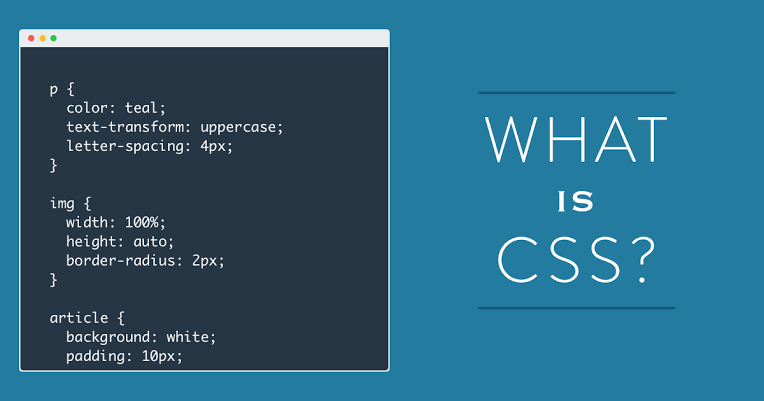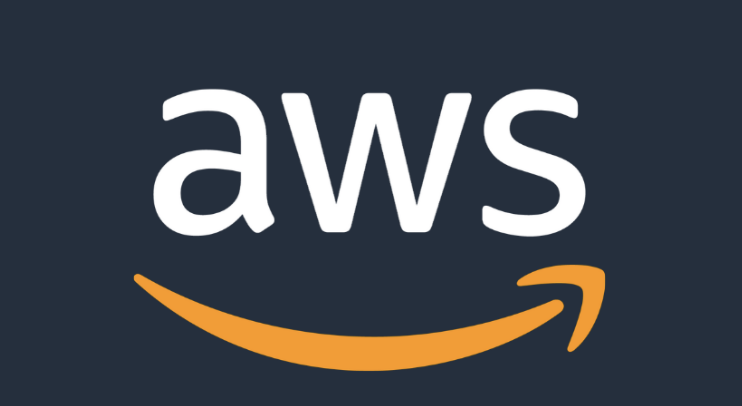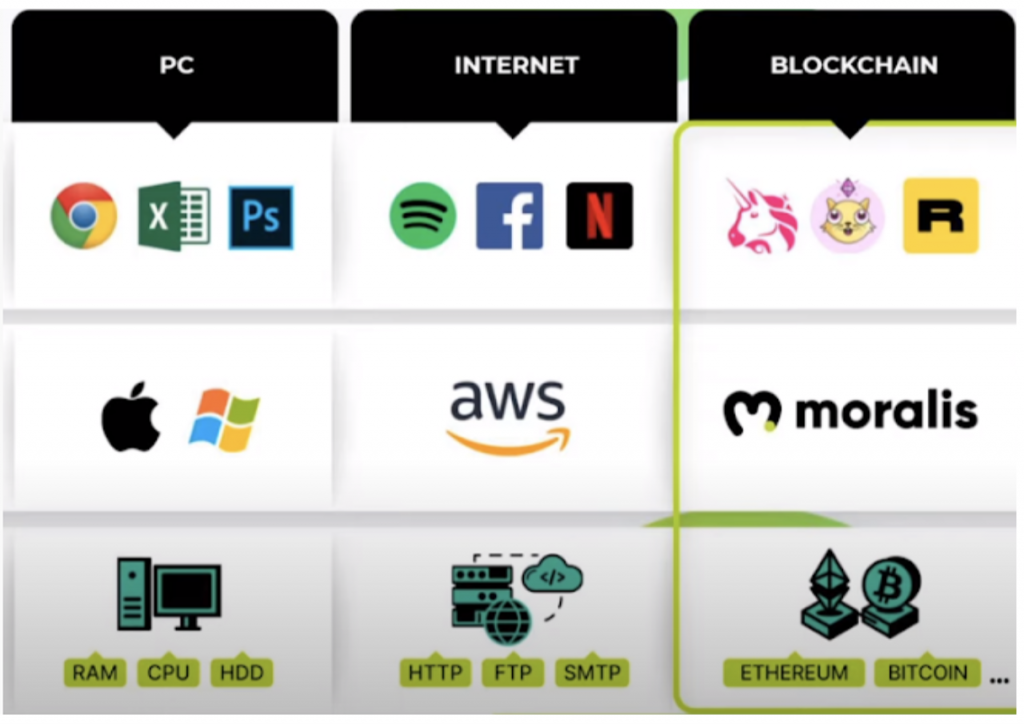Although developers are rapidly embracing Web3, Web2 content still reigns supreme among legacy developers. As such, we need to mention CSS before moving onto revolutionary Web3 tools, like Moralis’ fully managed, infinitely scalable Web3 backend, that you can sign up to use completely for free!
Cascading Style Sheets (CSS) is an easy-to-use design language that simplifies the task of making web pages presentable. It essentially deals with the “look and feel” of a web page. Without CSS, web pages would look dull and boring. Nearly all webpages and user interfaces written with HTML use CSS. While HTML provides the actual content of a website, CSS creates the styling for that content. It is easy to learn and straightforward to utilize when developing a website. Together with HTML, CSS is vital to good web design. Without it all websites would consist of simple plain text on a white background.
The CSS language allows web developers to control elements of style and function. This includes text color, font style, layout designs, spacing between paragraphs, column sizes etc. The method sheet language also allows the designers to manage how an internet site communicates with web browsers, including the formatting and display of their HTML documents.

CSS is independent of HTML and can be used with any XML-based markup language. This separation of HTML and CSS makes it easier to maintain sites, tailor pages, and share style sheets across many pages. Splitting the structure / content from the presentation is useful and it provides many efficiencies for developers.
CSS was introduced back in 1996 and it remains vital and easy-to-use for developing the best traditional webpages. Similarly, a crucial tool for creating the best decentralised apps in today’s Web 3 environment is Moralis. It makes Web3 and dApp development just as accessible as its early web relative.
What is CSS and Why Is It Important in Web Development?
CSS introduced several innovations to web development, such as allowing new fonts and different colours to be used in the browser. This opened up a whole new world of possibilities. CSS has long been an important Web2 tool, much like how Moralis is emerging as a crucial Web3 backend platform.
In general, the benefits of CSS include:
- Simplicity: CSS makes it easy for web developers to customize web pages
- Automation: It allows you to specify a certain style once and automatically apply it across a variety of sites
- Greater consistency in design: Using CSS allows developers to create a standard they can stick to, enabling websites to have their own character
- Efficiency: CSS reduces the number of lines of programming for each page, which improves site speed and reduces the file transfer size
- Easy maintenance: It simplifies site maintenance. Changing one line of code applies across whole websites, which reduces maintenance time
- Fast and responsive: CSS applies changes across all types of devices, making it a responsive and effective method of maintaining sites
- Search Engine Optimization: CSS simplifies web page structure and makes it easier to read for search engine spiders to read and understand
The World Wide Web Consortium, which oversees web standards, recently released a new standard for CSS, known as CSS3. The aim of CSS3 is for all major browsers to read and display every CSS function in the same way. They ensure that CSS keeps up with the times and keeps pace with the development of the internet.
CSS and AWS – Essential tools of the Web2 Era
CSS is a mature tool that has proven itself to developers as a vital component of their toolbox. Developers use it and accept it as a best practice method in the Web2 landscape.
On top of CSS, developers use tried-and-tested middleware that fully supports them in their drive to create Web2 internet content. In each technological revolution, there is always a middleware that allows developers to build things quickly.

Amazon created Amazon Web Services (AWS), which is now the world’s leading cloud computing platform and the primary profit driver for the internet giant. AWS comprises many different cloud computing products and services, including servers, storage, networking, remote computing, email, security, and mobile development.
Tools Making Life Easier for Developers
Moralis dramatically simplifies the life for Web3 developers. However, to truly see Moralis’ impact, it can be advantageous to look at a Web2 analog, such as AWS. Some analysts have compared the introduction of AWS to that of the utility companies from the early 20th century. A hundred years ago or more, a factory needing electricity would have to build its own power plant to service its needs. However, once the factory could buy electricity from a public utility, its running costs dramatically fell, as it no longer had to generate its own electricity to function. Instead, it could simply plug into the grid.
Taking cloud storage as an example, developers use AWS as it means they don’t have to build their own storage space, and they can only pay for what they use in the cloud. There are no up-front costs to building a storage system and there is no need to estimate usage. AWS customers just use what they need and pay for it accordingly. Nice and simple!
These days it is very easy to build on Web2. You want to log in a user with Google or Facebook? Easy – simply add one line of code and it’s done! Before Web2 came Web1, and the middleware that succeeded back then included Windows and Apple. Programmers and developers used Windows and Apple to build their programs rather than building their own operating systems. Since they were universal, they gave the developers instant access to the wider market. This saved a considerable amount of pain for the developers and enabled them to find success far more quickly and easily than if they had to start from scratch.
What is Web3?
The next chapter in the evolution of the internet is Web3, which is the decentralized internet, facilitated by the blockchain.
Web3 holds the keys to solving a long list of Web2 issues, which include a few large companies (Google, Facebook, and Amazon) controlling a lot of people’s data. Web3 improves privacy, boosts transparency, eliminates intermediaries, facilitates data ownership and digital identity solutions.

Decentralized applications, or building dApps, are driving the Web3 revolution. More specifically, dApps are blockchain-based applications. An integral part of many dApps or Web3 apps is smart contracts. Those of you with experience in blockchain technology will likely be familiar with the concept of smart contracts. These are essentially self-executing software agreements, pieces of code that run on a blockchain like the Ethereum blockchain. These automatically “run”, or execute when a relevant set of terms are met. As such, these contracts can automatically verify and perform a transaction between different parties.
Smart contracts are crucial when you build dApps and DeFi apps, which is most easily done with Moralis!
The Challenge for Web3 Developers
All of this amazing Web3 functionality is the future of the internet. But is there anything holding Web3 apps back from going mainstream? Well, developing dApps is still complex and time-consuming, and there are many challenges. A new developer trying to build on Web3 might even come to the conclusion that Web3 programming sucks!
Developers are discovering that they need to be supported by new middleware that can support them in the same way that CSS and AWS have helped them with development in Web2. Every dApp needs to get index information, every dApp needs to fetch all transactions and balances, and every dApp needs to be able to watch what happens on the blockchain in real-time.

If dApp builders had to find a way to do this themselves, it would require massive investment in terms of effort, time, and money. Also, every time a new blockchain was released, a massive effort would be required to get the dApp to function on that blockchain. For example, if a dApp was created for Binance Smart Chain itt would take costly adjustments to make it run on, say, the Polygon network.
When developers start creating their dApp, they are quickly faced with these issues. They need a solution where they can be supported by a provider of all this back-end information, to allow them to get one with what they do best, developing their dApp. Where can they turn to, to find an easy solution to their problems? This is where Moralis comes in.
What is Moralis?
Moralis is a middleware solution for the decentralized internet. It allows developers to build cross-chain dApps very quickly and easily, and it is rapidly becoming the gold standard middleware for dApp development.
The ultimate goal of Moralis is to make building on Web3 as easy as building on Web2, by providing a common backend solution that everyone can use. Moralis gives you access to fully-managed, infinitely scalable Web3 backend infrastructure. Additionally, Moralis is a crucial piece of technology, that saves developers considerable amounts of pain and significant amounts of time.
Moralis – Underpinning the Web3 revolution
Moralis allows you to build serverless Web3 dApps, meaning you don’t have to run your own infrastructure, which saves a great deal of time and money. You just use Moralis for the backend and you focus on the frontend, doing what matters to you. Developers don’t have to do any customization, or maintain their dApp, or make any changes in the back-end. Moralis takes care of all of that. You just build your dApp for Moralis and it will instantly work on all blockchains.

You, therefore, ensure that your dApps are future-proof by building on Moralis. dApps built on Moralis will work automatically on new blockchains without the developer having to change anything.
Why You Should Start Using Moralis Today
Moralis has collected the most important pieces of infrastructure that every dApp needs. You can use the same interface and same API for all the chains. With one line of code in Moralis, you can authenticate your users and access all their information quickly and easily.
What’s more, you get all of the necessary information and all transactions, balances, and NFTs, cross-chain – for Ethereum, Polygon, Binance Chain, and Arbitrum. What’s more, Moralis will add further chains soon. Developers immediately have access to user profiles across chains and have all of the information they need to start building.
You can also fetch historical transactions; Moralis has a massive index of all blockchain transactions available through Archive Nodes. You get logs, past smart contract events, and real-time transactions – all very easily, through very simple JavaScript code.
One user can have many addresses associated with their user profile. However, Moralis overcomes this challenge by enabling you to connect everything to one single user. You can store whatever you want in the Moralis database, which is infinitely scalable. You can even store off-chain data if you want. When a user logs in with a crypto address you can add their email and phone number. You can also send push notifications to that user or upload files too.
However, something to note is that Moralis never compromises decentralization. Each dApp has its own Moralis-powered backend to coordinate all of the infrastructure to read data from the blockchain and to index data from the blockchain. All assets, ownerships, smart contracts, and NFTs are still on the blockchain. Moralis simply allows you to read from the blockchain and index it, without compromising its decentralization.
Speedy Nodes on Moralis
You can connect your dApp to the blockchain in the fastest, most reliable way possible using Moralis’ Speedy Nodes, which are best in class. Speedy Nodes offer the same functionality as normal Ethereum, Polygon, BSC or Arbitrum nodes, but with exceptional speed and reliability. Moralis fully integrates them with all services. If you want to develop various dApps quickly, Moralis should be your go-to choice!
What’s more, having even fundamental knowledge of CSS will help you make sure your apps look better than ever before. You can offload all the tedious backend tasks to Moralis. As such, you’ll simply get a fully managed, infinitely scalable Web3 infrastructure that is capable of powering all your dApps!
Supercharge your dApp development by using Moralis!
Moralis is now officially out of beta, following the release of the Moralis 1.0 “Enlightenment” Update. Web3 developers are already flocking to Moralis to build their Web3 applications, so what are you waiting for? You can now finally build your Web3 dApps quickly and easily – all you need to know is JavaScript.
Make sure you check out the guides and tutorials provided for free on the Moralis YouTube channel – such as how you can build a dApp in 30 minutes using Moralis. Other tutorials cover How to build serverless dApps, Building a BSC web app, and Building real-time cross chain dApps.Also, for the latest updates to Moralis, be sure follow us on Twitter – @MoralisWeb3.
